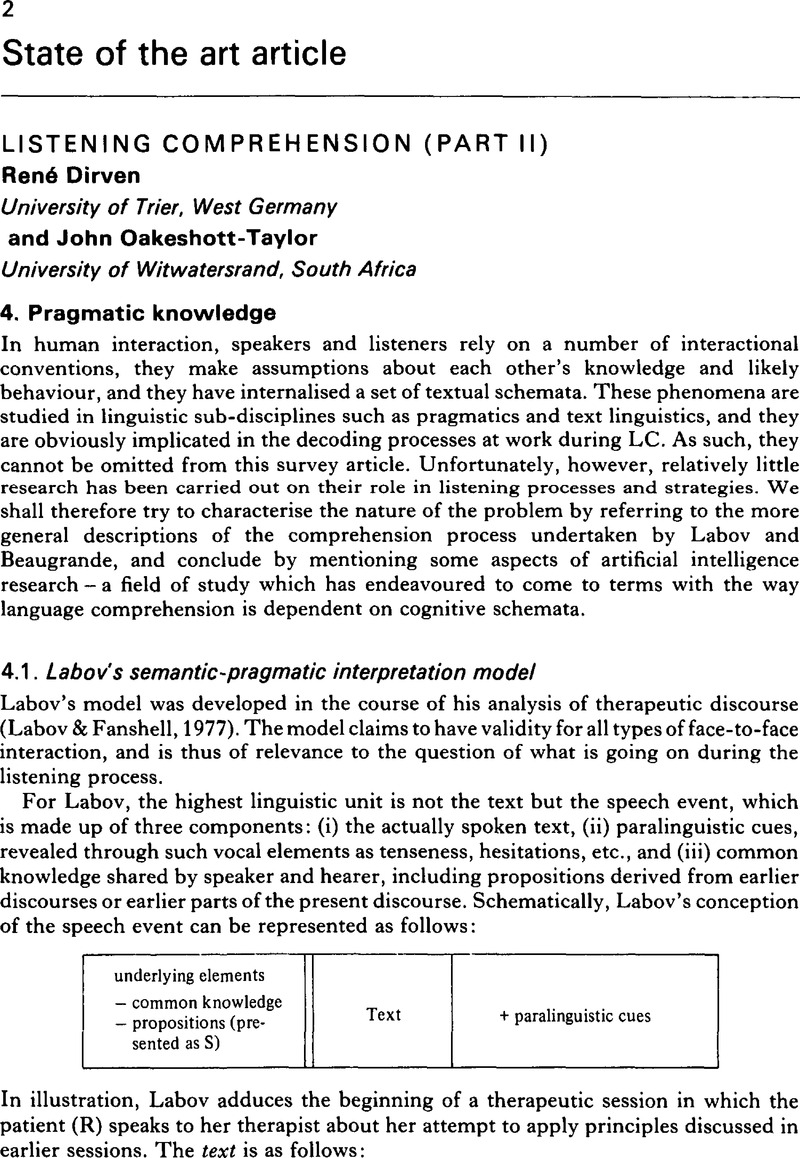Crossref Citations
This article has been cited by the following publications. This list is generated based on data provided by Crossref.
Oakeshott-Taylor, John
1986.
Slips of the ear.
System,
Vol. 14,
Issue. 1,
p.
99.
Long, Donna Reseigh
1990.
What You Don't Know Can't Help You.
Studies in Second Language Acquisition,
Vol. 12,
Issue. 1,
p.
65.
Singleton, David
and
Little, David
1991.
The second language lexicon: some evidence from university-level learners of French and German.
Interlanguage studies bulletin (Utrecht),
Vol. 7,
Issue. 1,
p.
61.
RUBIN, JOAN
1994.
A Review of Second Language Listening Comprehension Research.
The Modern Language Journal,
Vol. 78,
Issue. 2,
p.
199.
Buck, Gary
1994.
The appropriacy of psychometric measurement models for testing second language listening comprehension.
Language Testing,
Vol. 11,
Issue. 2,
p.
145.
Lee, Philip Yungkin
1995.
Some examples of listening exercises in Mandarin.
Australian Review of Applied Linguistics. Series S,
Vol. 12,
Issue. ,
p.
229.
De La Batie, Bernadette Dejean
and
Bradley, Dianne C.
1995.
Resolving word boundaries in spoken French: Native and non-native strategies.
Applied Psycholinguistics,
Vol. 16,
Issue. 1,
p.
59.
Buck, Gary
1997.
Encyclopedia of Language and Education.
p.
65.
Goh, Christine
2005.
Expertise in Second Language Learning and Teaching.
p.
64.
Westbrook, Carolyn
2023.
The impact of input format on written performance in a listening-into-writing assessment.
Journal of English for Academic Purposes,
Vol. 61,
Issue. ,
p.
101190.



